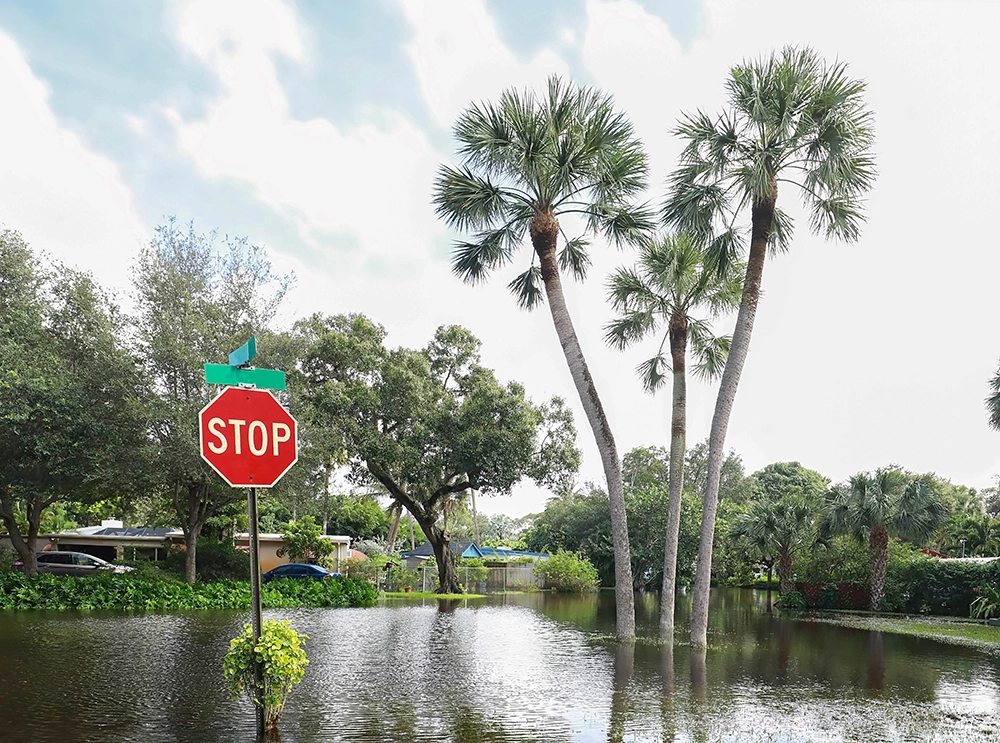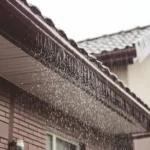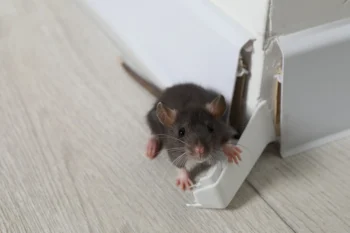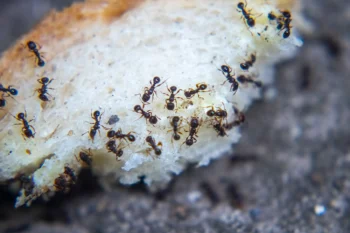
Heavy rains often bring flooding, and the effects reach far beyond water damage. Cockroaches, rats, flies, and mosquitoes are driven indoors by rising waters, where they hide in tight spaces and reproduce quickly. For households caught off guard, this sudden wave of pests can become overwhelming fast.
As their natural habitats are destroyed, these pests search for food and shelter inside homes. The result is contaminated surfaces, the spread of harmful germs, and an increased risk of bites or illness. Acting quickly is the best way to keep your family and living space safe.
Stay pest-free during flood season by relying on Bug Out’s expert recommendations.
How Do Floods Attract Pests Into Homes?
When floodwaters recede, they leave behind stagnant water and debris that create ideal breeding grounds for pests. The damp, decaying environment accelerates reproduction, quickly turning small pest problems into large infestations. Acting fast with pest control keeps issues from spreading further.
Displaced pests often slip indoors through cracks, weakened foundations, and open vents. Overflowing sewers add even more pests and harmful bacteria into the mix, making the problem worse. Basements that remain damp for days become prime hotspots, so a thorough inspection is essential to catch early signs of activity.
What Are the Most Common Pests After a Flood?
Floodwaters push pests out of their natural environments and into homes and buildings. Once inside, they search for food and shelter, making infestations more likely. The most common pests people see after flooding include:
Flies
After heavy flooding, flies are attracted to garbage piles and decaying debris, where they quickly lay eggs and multiply. The lingering moisture makes these conditions perfect for their population to explode. Without prompt cleaning, entire areas can become breeding grounds, and infestations spread faster than expected.
As flies move between waste and living areas, they pick up bacteria that contaminate food and surfaces. This contamination can cause stomach illnesses and infections, especially in children and the elderly. Over time, repeated exposure places the health of the whole household at serious risk.
Cockroaches
During floods, overflowing sewers push cockroaches out of their usual hiding spots and into homes. They slip in through vents, drains, and small cracks, making them difficult to keep out. Because they can survive long periods underwater, flood conditions hardly slow them down, allowing infestations to grow quickly. Removal often demands persistence and repeated treatments.
Once inside, cockroaches spread bacteria and leave droppings on food and surfaces. Children are especially at risk, as exposure can trigger asthma attacks and allergies. Their presence can also heighten stress and unease in households already coping with flood damage.
Mosquitoes
Floodwaters leave behind standing pools in low areas, old tires, and containers, creating the perfect conditions for mosquitoes to thrive. Within just a few days, eggs hatch and swarms grow rapidly, posing a serious problem. Immediate cleanup and draining of these water sources is crucial to prevent future infestations and reduce the spread of disease.
Mosquitoes are not only annoying but also dangerous, capable of transmitting diseases like dengue, chikungunya, and malaria. Their bites can cause irritation and allergic reactions, particularly in sensitive individuals. Maintaining a mosquito-free home helps protect everyone from both discomfort and illness.
Rats
Floodwaters drive rats from sewers, fields, and other natural areas into residential and commercial spaces. Their ability to squeeze through tiny cracks and gaps allows them to enter homes with surprising ease. If left unmanaged, rat populations can expand rapidly, creating serious health and structural problems.
Inside the home, these rodents leave feces and urine on surfaces where food is prepared or stored. They are capable of transmitting diseases like leptospirosis and hantavirus, putting all household members at risk. Quick action is critical to prevent contamination and limit further infestation.
What Dangers Do Flood-Related Pests Pose to Your Family?
After a flood, leftover water and debris create an environment where pests can multiply quickly. These invaders can introduce serious health risks to your home. Important hazards to watch for include:
- Leptospirosis: Caused by contact with rat urine, which can contaminate surfaces and water sources, posing a serious health threat.
- Diarrhea & Cholera: Triggered by germs carried by flies and exposure to polluted water, increasing the likelihood of gastrointestinal infections.
- Respiratory Problems: Result from exposure to mold and pest droppings in damp or poorly ventilated areas, often aggravating existing breathing conditions.
- Mosquito-Borne Diseases: Transmitted through mosquito bites, including species that thrive in flood-affected areas, potentially leading to illnesses such as dengue and malaria.
How Do You Prepare Your Home for Incoming Floodwaters?
Flooding significantly raises the chances of pests entering your home. Standing water, debris, and damp areas create ideal conditions for rodents, insects, and other pests to thrive. Take these steps to protect your home and basement.
- Elevate Belongings: Raise furniture, electronics, and other valuable items off the floor. Doing so limits hiding places for pests and helps prevent infestations.
- Seal Openings: Ensure all doors, windows, vents, and cracks are completely closed or sealed. This helps keep pests out during rising floodwaters.
- Secure Food: Keep all food in airtight containers to avoid contamination and make your home less attractive to pests.
- Yard Maintenance: Remove debris, clean gutters, and maintain an organized yard. A well-kept outdoor space discourages rodents and reduces mosquito breeding sites.
- Pest Inspections: Schedule a pre-flood inspection with a pest control professional. Early detection and treatment can prevent infestations before they become serious problems.
What Are the Best Ways to Prevent Pests After a Flood?
Once floodwaters withdraw, prompt measures are essential to stop pests and bacteria from establishing themselves. The longer water and debris remain, the higher the chance of health hazards and infestations. Use these steps to protect your home and family:
- Clean Immediately: Remove mud, leftover food, and debris that could attract cockroaches and flies. Disinfect all surfaces that came into contact with floodwater to reduce bacteria and prevent contamination.
- Mosquito Control: Get rid of standing water as soon as possible to stop mosquitoes from breeding. Clear clogged gutters, treat damp basement areas, and consider using screens or bed nets to protect living spaces.
- Deal With Flies: Take out trash daily and make sure all bins are tightly closed. Use fly traps when needed and remove or dispose of any decaying organic material carefully.
- Rat and Cockroach Control: Seal cracks and holes in foundations and basements to block pests from entering. Keep food stored or remove exposed items to make your home less attractive to rats and cockroaches.
Protect Your Home from Flood Pests with Bug Out
Seeing persistent pests, rat droppings, or mosquitoes lingering after cleanup is a clear warning of a major infestation. These intruders multiply fast and can become deeply established. Even minor signs should be addressed immediately, as infestations grow quickly. Ignoring the problem can lead to serious health and property issues.
Bug Out delivers professional pest control from start to finish. Our team assesses your home, applies specialized treatments, and monitors progress to keep pests at bay. We customize our strategies for each home to ensure effective and lasting protection for your family.
Contact Bug Out today to arrange an inspection and get trusted, professional pest control services.





